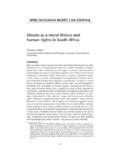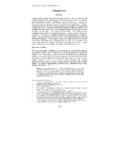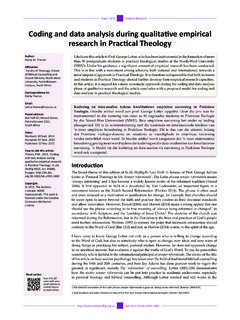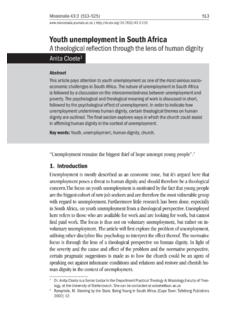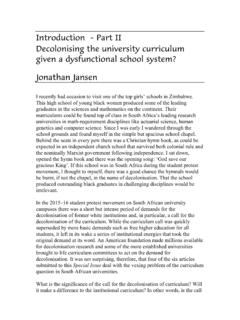Transcription of the sensory profile: comparative analysis of children …
1 28. Chatoor I. sensory food aversions in infants and toddlers. Zero to Journal of Occupational Therapy. 2000; 54(1): 36-43. Three. 2009; 29(3): 44-49. 33. DeGangi G, Breinbauer C, Roosevelt J, Porgess S, Greenspan S. 29. Burnham M, Goodlin-Jones B, Gaylor E, Anders T. Nightime sleep- Prediction of childhood problems at three years in children expe- wake patterns and self soothing from birth to one year of age: a riencing disorders of regulation during infancy. Infant Mental Health longitudinal interventions study. Journal of Child Psychology and Journal. 2000; 21(3): 156-175. Psychiatry. 2002; 43(6): 713-725.. 30. Kielhofner G. Research in Occupational Therapy: Methods of Inquiry for Enhancing Practice Pliladelphia: Davis Company; 2006. 31. Cohn E. Parent perspectives of occupational therapy using a sensory integration approach.
2 American Journal of Occupational Therapy. Corresponding Author 2001; 55(3): 285 294. Jacqueline Jorge 32. Cohn E, Miller L, Tickle-Degnen L. Parental hopes for therapy outcomes: children with sensory modulation disorders. American The sensory profile: comparative analysis of children with specific language impairment, ADHD and autism Janine van der Linde B Occ Ther (UFS), MSc OT (Wits). Postgraduate Student, Department of Occupational Therapy, School of Therapeutic Sciences, Faculty of Health Sciences, University of Witwatersrand Denise Franzsen BSc OT (Wits), MSc OT (Wits). Senior Lecturer, Department of Occupational Therapy, School of Therapeutic Sciences, Faculty of Health Sciences, University of the Witwatersrand Paula Barnard-Ashton, BSc OT (Wits), MSc OT (Wits).
3 E Learning Co-ordinator, School of Therapeutic Sciences, Faculty of Health Sciences, University of the Witwatersrand 34. The sensory Profile is useful in assisting with diagnosis of certain conditions which present with different sensory processing patterns. The purpose of this study was to compare the sensory Profile for children with Specific Language Impairment (SLI) (n=22) to a typical ABSTRACT. pattern, as well as the reported profiles of samples with autism and Attention Deficit/Hyperactive Disorder (ADHD). The SLI sample had significantly more sensory processing difficulties than the typical population in all aspects. The sensory Profile for both the autism and ADHD samples differed significantly from that of the SLI sample for H. Modulation Related to Body Position and Movement and Factor 6: Poor Registration.
4 The SLI sample showed fewer sensory processing problems except for J. Modulation of sensory Input Affecting Emotional Responses, M. Behavioural Outcomes of sensory Processing and Factor 9: Fine motor/perceptual indicating that this small sample of children with SLI did present with a unique sensory Profile pattern. Introduction sensory integration10. sensory integration results from the brain's The sensory Profile developed by Winnie Dunn is a measure of ability to process and integrate sensory information received from sensory processing and has been widely used both clinically and the environment and from the body10. The main contributors to in research to gain information on how children process sensory sensory integration as described in the work of Ayres are the tactile, information from the body and the environment1.
5 The informa- vestibular and proprioceptive systems, but does not exclude the tion gained from the sensory Profile provides information on the visual, auditory, olfactory and taste senses10. There is an ongoing contribution of sensory processing to a child's daily performance. It debate on the use of terminology but this article describes sensory provides information regarding behavioural tendencies in response processing according to Dunn's research and published work on to stimuli and identifies which sensory systems are likely to contrib- this concept11. ute to, or create barriers during functional activities2. Studies using Thus for the purposes of this research the processing of sensory the sensory Profile propose that children with certain dysfunctions input refers to the functions the nervous system used to receive, respond differently to sensory stimuli than children without dys- regulate, and organise sensory input according to the neurological functions2-5.
6 It is assumed that children with certain dysfunctions threshold of a child12. sensory modulation is the ability to regulate process sensory information differently. sensory information and to generate an appropriate response that Research indicates that there are specific patterns of sensory matches the demands and expectations of the environment12. It processing consistent with the diagnostic criteria for children with further plays a role in regulating the habituation and sensitisation of autism and children with Attention Deficit Hyperactivity Disorder the person's responses to sensory information from the body and (ADHD)2,3,6,7. It is however not known whether a similar consistent the environment13. Dunn further proposed that, in order to produce pattern of sensory processing is present in other dysfunctions, like functional behaviour, modulation of information needs to create an Specific Language Impairment (SLI), where behaviours similar to interchange along a continuum of habituation and sensitisation1.
7 Those associated with autism and ADHD are also observed8,9. When a child has difficulty modulating between habituation and sensitization, they present with maladaptive behaviours, for Literature review they can present as being over excitable, hyperactive or overly The development of the sensory Profile progressed from the lethargic10. However when the impact of neurological thresholds ground breaking work that was initially done by Jean Ayres on on the behavioural responses is considered, a range of possible SA Journal of Occupational Therapy South African Journal of Occupational Therapy Volume 43, Number 3, December 2013. interpretations of these behaviours emerge, depending on the therapist following a full assessment17. effect of the high or low thresholds on performances1.
8 children According to Tomblin9 SLI is diagnosed when the achieve- with a low neurological threshold often display the over excitable ment of age appropriate language levels fall at least -1 Standard or hyperactive behaviours while over habituation can occur when Deviation (SD) below the norm. The International classification a high neurological threshold is present resulting in overly lethargic of disease version 10 (ICD-10) further states that a disorder or and inattentive behaviour. The conceptual model developed by delay in developmental speech and language is strongly related to Dunn considers the relationship between neurological thresholds biological maturation of the central nervous system and in most and behavioural (self-regulation) strategies1,11. Four basic patterns cases the functions affected are language, visio-spatial skills and of responding to sensory events in everyday life were identified: motor coordination18.
9 Low registration, sensation seeking, sensory sensitive and sensa- Although a number of studies on SLI deal with controversies tion avoiding1,11. These patterns are identified through the use of about language acquisition and use, such as difficulties in auditory the sensory Profile, a 125 item, behavioural questionnaire that is processing, learning the rules of language and registering the dif- completed by a child's caregiver11. ferent contexts for language, research has also reported other Various studies have been done to determine if the sensory Pro- characteristics common to children with SLI19,20. These character- file could discriminate between different diagnostic groups2-4,6,7,13,14. istics, which are non-linguistic, include poor social skills, a lack of In a study by Dunn and Bennett3 the researchers evaluated 70 attention21, difficulty with fine and gross motor skills22 and poor short children with ADHD to compare their sensory processing patterns term memory21.
10 Difficulties with planning, organising and sequencing to that of typically developing children , using the sensory Profile. of thoughts and problems with beginning and completing tasks are Multivariate analyses of variance (MANOVA) indicated that the also features of this condition23. children with ADHD showed differences in all 14 sections of the sensory Profile. The sensory Profile was found to discriminate best sensory processing and language between the high incidence factors like sensory seeking behaviours, Hulslander et. , found a possible association between speech inattention and distractibility and low incidence factors like oral and language disorders and sensory processing difficulties in some sensory sensitivity and fine motor perceptual behaviour in children children and proposed that there could be a link between chronic with ADHD3.
